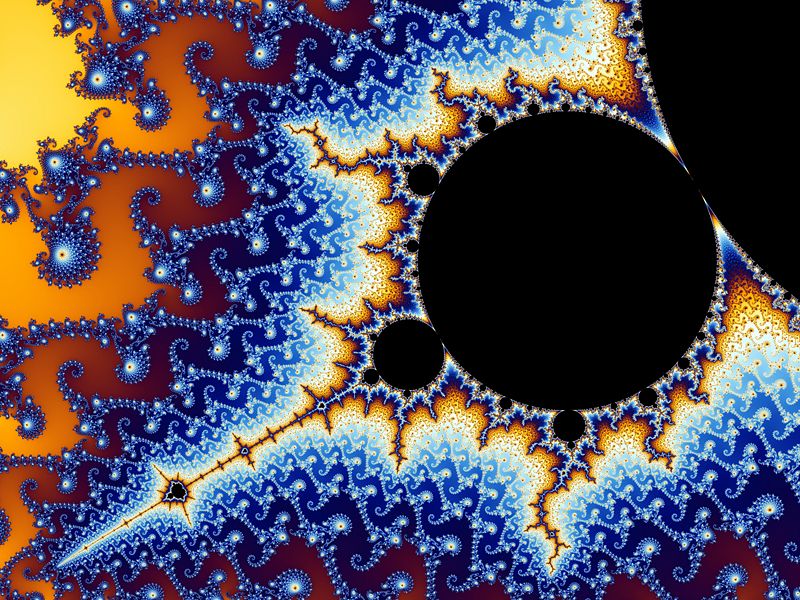— Benoît Mandelbrot, in his introduction to The Fractal Geometry of Nature

Once again, I have gotten behind in my blogging. I wish I could say it was solely due to a lack of time, but honestly, allergies have gotten in the way. I find it to be quite difficult to write when the world around you is spinning and your head is pounding.
Moving on, I just wanted to do a short tribute to Benoît Mandelbrot, a famous mathematician who passed away this last week. Mandelbrot was responsible for a slew of results in a wide range of fields from mathematical physics to mathematical finance, but he was most famous for his work on fractal geometry. Indeed, Mandelbrot was the one to first coin the term "fractal", and the Mandelbrot set was named after him.

The dominant property of fractals is recursive self-similarity. For example, if you have an image of a fractal shape and you then zoom in on a portion of that image, the original and zoomed-in images will have very similar properties (at least statistically). If you keep zooming-in, you will keep experiencing similar phenomena - in this sense, fractals have a fine structure at arbitrarily small scales. Many objects in nature exhibit fractal characteristics, such as clouds, mountain ranges, tree branches, and snowflakes, but of course these objects only exhibit such characteristics to a certain measurable, not arbitrary, level.

Fractal geometry was one of the objects that originally drew me into the field of mathematics. As a freshman in college studying Aerospace Engineering, I remember frequently going to the office of my instructor for Differential Equations and seeing a fractal image on his door. This image was generated using strange attractors, and it inspired me to start researching chaos theory and dynamical systems.

My voyage through the mathematics world would eventually wind itself into the realms of partial differential equations, numerical analysis, and fluid dynamics, and my current research is dedicated to the numerical study of the incompressible Navier-Stokes equations. And with regards to that, Mandelbrot conjectures in his treatise The Fractal Geometry of Nature: "Furthermore, I contend that the singularities of the solutions of the Navier-Stokes equations can only be fractals." When studying the fractal characteristics of turbulence and energy spectra, the above statement makes increasingly more sense. And so it seems I may be back again to the land of fractals, a land that Mandelbrot brought to our attention and wonderfully explored for us. So thank you, Professor Mandelbrot.
A couple of other comments regarding the world of mathematics:
- In a post on his blog last night, Terry Tao remarked: "And if the proof of (say) a lemma is analogous to a short story, then the statement of that lemma can be viewed as analogous to the moral of that story." I doubt Tao intended it, but I found the statement to be a fun analogy illustrating the literary merits of mathematical proof.
- The blog Intersections - Poetry with Mathematics had an entry last week detailing three poems about the three classes of triangle. I found the poems, originally written in French, to be fun and clever.


No comments:
Post a Comment